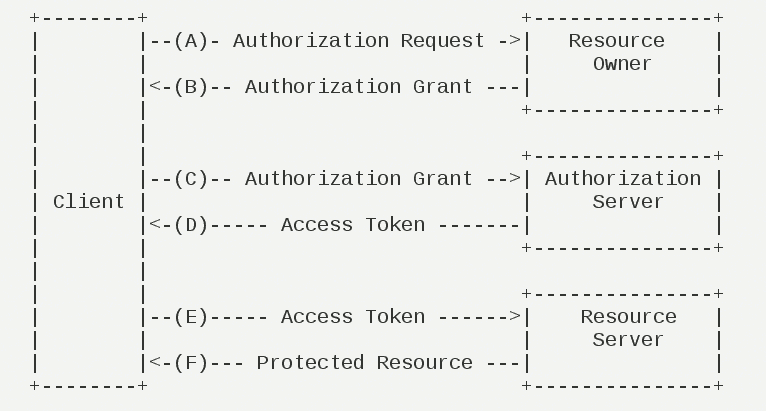Spring OAuth2 學習整理
OAuth2 介紹
OAuth2是目前最流行的授權機制,用來授權第三方應用,獲取用戶數據。
博客提供的流程圖中有一點需要注意的是C步驟是用戶參與完成驗證,驗證之後Client拿到對應的Access Token 再進行後續操作.這時Client可以是第三方服務器或者瀏覽器js存儲. OAuth運行流程

說明
spring官方發佈了blog ,最新版的SpringSecurity已經不支持創建一個授權服務器,轉而提供一個標準的授權服務....
下面的代碼是一個單項目,包含了授權服務,資源服務.使用mybatis-plus自定義了用戶信息查詢和客戶端信息查詢.
配置
<dependency> <groupId>org.springframework.boot</groupId> <artifactId>spring-boot-starter-security</artifactId> </dependency> <dependency> <groupId>org.springframework.cloud</groupId> <artifactId>spring-cloud-starter-oauth2</artifactId> </dependency>
@Configuration //資源服務配置 @EnableResourceServer //認證服務配置 @EnableAuthorizationServer public class OAuth2Config extends AuthorizationServerConfigurerAdapter { @Autowired private AuthenticationManager authenticationManager; @Autowired private UserDetailsService userDetailsService; @Autowired private SysClientDetailsService sysClientDetailsService; /** * 定義授權和令牌端點以及令牌服務 */ @Override public void configure(AuthorizationServerEndpointsConfigurer endpoints) { endpoints // 請求方式 .allowedTokenEndpointRequestMethods(HttpMethod.GET, HttpMethod.POST) // 可重寫TokenEnhancer 自定生成令牌規則 .tokenEnhancer(endpoints.getTokenEnhancer()) // 用戶賬號密碼認證 .userDetailsService(userDetailsService) // 指定認證管理器 .authenticationManager(authenticationManager) // 是否重複使用 refresh_token .reuseRefreshTokens(false); } @Override public void configure(AuthorizationServerSecurityConfigurer oauthServer) { //是否允許客戶端使用form參數提交,不開啟則使用Authorization 要加在請求頭中,格式為 Basic 空格 base64(clientId:clientSecret) oauthServer.allowFormAuthenticationForClients(); } /** * 配置客戶端詳情 */ @Override public void configure(ClientDetailsServiceConfigurer clients) throws Exception { clients.withClientDetails(sysClientDetailsService); } }
使用流程
1.獲取token
2.使用access_token訪問/index
Authorization:bearer xxxx
其中xxxx為步驟1獲取的access_token
3.使用refresh_token獲取新的access_token
例子源碼
源碼為ruoyi2.0版本抽出部分代碼構建,新版本ruoyi已去掉oauth2的認證模式
https://gitee.com/MeiJM/spring-cram/tree/master/oauth2
參考資料
https://www.cnblogs.com/fengzheng/p/11724625.html
https://github.com/spring-projects/spring-security/wiki/OAuth-2.0-Migration-Guide
http://www.ruanyifeng.com/blog/2014/05/oauth_2_0.html